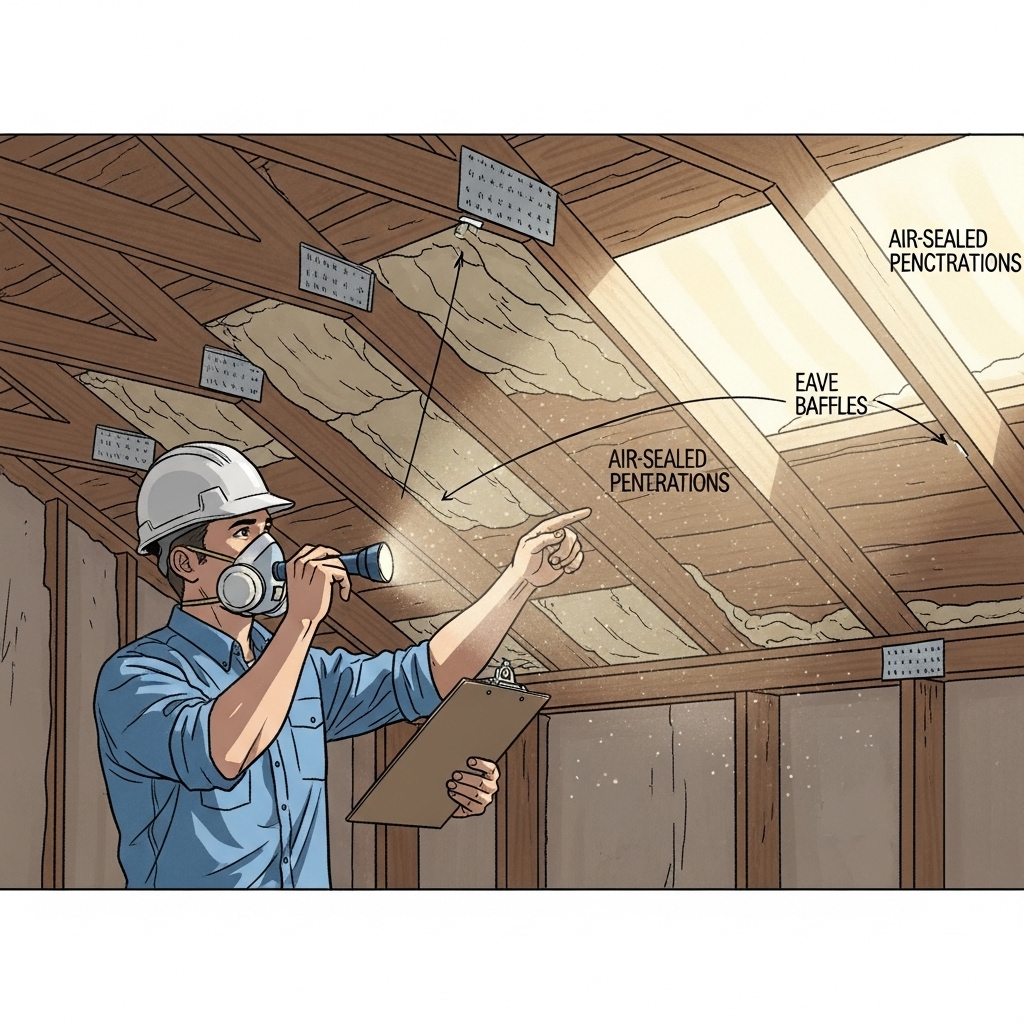Choosing an attic insulation contractor in Los Angeles is about far more than finding the nearest company with a truck and a hose. Our city’s homes span a century of styles and construction methods, from Craftsman bungalows to hillside contemporaries, each with quirks that reward careful attention. The best contractors act like building detectives first and installers second. They listen to how your home behaves—rooms that overheat by mid-afternoon, chilly corners on winter mornings, dust that seems to appear from nowhere—and then translate those clues into a clear plan. At the center of that plan is the right level of attic insulation, but what sets great work apart is the preparation and detail that make the upgrade perform day after day.
A reputable Los Angeles contractor begins with a thorough evaluation. That means more than a quick glance through the hatch. They’ll check the continuity of existing insulation, look for visible air leaks at top plates and penetrations, examine the state of eave vents, and assess any recessed lighting or mechanical equipment in the attic. They’ll also ask about the daily rhythm of your home: which rooms feel uncomfortable, when those discomforts arise, and how the HVAC system behaves. This holistic conversation informs a scope that balances material choice, target R-value, and the tasks needed to make the result live up to its promise.
What a comprehensive scope looks like
Quality scopes share common elements. Air sealing comes first—closing gaps around plumbing stacks, wiring penetrations, and chases to keep conditioned air where it belongs. Next come eave baffles, which preserve ventilation paths and prevent wind from thinning insulation along the edges. The attic hatch gets upgraded with insulation and a tight gasket to avoid creating a weak link. Only after these steps are complete does the team install the insulation itself—whether blown-in cellulose, blown-in fiberglass, or a hybrid approach over existing batts—to the depth needed for consistent R-value across the entire field.
Reputable contractors also anticipate and manage the details that can trip up a project. If you have recessed lights not rated for insulation contact, they’ll propose safe strategies or replacements. If bath fans vent into the attic, they’ll reroute them outdoors. Chimney chases, skylight wells, and mechanical platforms each get the right materials and clearances. It’s this diligence—much of it invisible once the job is complete—that makes the difference between an attic that looks fine on paper and one that feels great in daily life.
Experience with Los Angeles microclimates
From coastal neighborhoods influenced by the marine layer to inland valleys that see hotter peaks, Los Angeles is a patchwork of microclimates. Contractors who work across the region understand how roof color, shading, ventilation, and local temperatures interact. That insight translates into recommendations that feel right once installed: a slightly higher R-value in a sun-soaked Valley ranch, or a focus on ventilation and even coverage in a coastal bungalow where summer afternoons are warm but not extreme.
Local experience also shows in how contractors protect your home during the job. Thoughtful crews set up containment at the hatch, lay runners where needed, and keep dust to an absolute minimum. They stage materials to avoid unnecessary trips and communicate the work plan so you know what to expect.
Materials and methods that fit your home
Blown-in cellulose and blown-in fiberglass are the mainstays for Los Angeles attics, and a knowledgeable contractor will explain the merits of each. Cellulose’s cohesive coverage and acoustic performance can be attractive in busy neighborhoods or near flight paths. Blown fiberglass offers a light, airy blanket that achieves excellent R-values with even coverage. Many homes benefit from a hybrid strategy, topping existing batts with a loose-fill layer to smooth out gaps and inconsistencies. The best choice depends on your attic’s layout and your comfort priorities, not on a one-size-fits-all prescription.
For specialized cases—such as bringing ductwork into the thermal envelope—a contractor may discuss insulating the roof deck with spray foam to create a conditioned attic. This is a more complex assembly that changes ventilation and should be approached with care. In most Los Angeles homes, a vented attic with robust floor insulation remains the most straightforward path to steady comfort.
How to evaluate a proposal
Look for clarity. A strong proposal spells out air sealing steps, the type and depth of insulation, how eave ventilation will be protected, and how the attic hatch will be insulated and sealed. It explains what will happen if existing insulation needs removal, how storage platforms will be built if you want to keep access, and what kind of cleanup you should expect. Ask for photos of similar projects and for confirmation that depth markers will be installed. These are practical indicators that the contractor’s plan prioritizes performance, not just speed.
It’s also fair to ask how the crew will verify results. Some contractors provide photo documentation of air sealing before the blow, along with shots of depth markers after completion. These visuals help you see that the promised R-value is actually present across the attic, not just in a few thick spots near the hatch.
Communication and care on installation day
Good contractors communicate clearly. They’ll let you know when to expect the crew, how long the work should take, and what areas of the home they’ll need to access. They’ll protect flooring and finishes, move systematically through preparation and installation, and treat your home as if it were their own. When storage platforms are part of the plan, they’ll build them above the insulation line so performance is maintained while access stays practical.
When the work is complete, they’ll walk you through the attic—either in person or with photos—so you can see the uniform coverage, eave baffles in place, and the insulated hatch. They’ll answer questions about what to expect as the home settles into its new normal, and how to avoid disturbing the insulation over time.
Why details matter for long-term performance
An attic upgrade is not just an installation—it’s a transformation of your home’s thermal and air boundary. The details ensure that transformation lasts. Properly sealed penetrations reduce dust and keep indoor air where it belongs. Baffles preserve ventilation, protecting insulation from wind washing and keeping attic temperatures in check. A well-insulated hatch eliminates a thermal weak spot. Together, these steps support a consistent R-value that you feel in quieter rooms and steadier temperatures every day.
In a city where we experience warm afternoons and cool evenings, a well-executed attic is like a flywheel for comfort. It slows big swings, smoothing out the daily cycle so your home feels composed. Your HVAC system benefits, too, as it runs more calmly without the constant push and pull caused by attic losses.
Frequently asked questions
How do I know if a contractor is doing more than just adding insulation?
Ask to see the scope. It should include air sealing, eave baffles, and an insulated, gasketed hatch. If those items are missing or vague, you may be looking at a bare-minimum plan that won’t deliver the comfort you want.
Should I remove my existing insulation?
It depends on its condition. If it’s clean, dry, and reasonably even, topping up can be efficient. If it’s contaminated, patchy, or obstructing ventilation, removal followed by a fresh, uniform installation often performs better in the long run.
Which is better: cellulose or fiberglass?
Both are excellent when installed correctly. The better choice depends on your goals and attic layout. Cellulose often wins on acoustic performance and cohesive coverage; fiberglass is valued for its light, resilient blanket and reliable R-value at depth.
What about my attic hatch?
It should be insulated and sealed to match the surrounding R-value. An uninsulated hatch acts like a hole in the thermal boundary, erasing gains elsewhere.
Will I feel a difference right away?
Yes. Most homeowners notice steadier temperatures and quieter rooms immediately. Afternoons soften, evenings hold comfort longer, and HVAC cycles become calmer.
How do contractors protect my home during installation?
Professional crews set up containment at the hatch, use runners to protect floors, and carefully manage hoses and materials. They clean thoroughly, leaving the attic neat with visible depth markers and the hatch sealed and insulated.
Take the next step
If you’re ready to turn expertise into everyday comfort, start with a thorough attic assessment and a clear, detailed plan. A well-executed upgrade in attic insulation will bring calm, consistent comfort to your Los Angeles home. Reach out to a trusted local team to schedule a visit and see how the right approach can transform your space.

